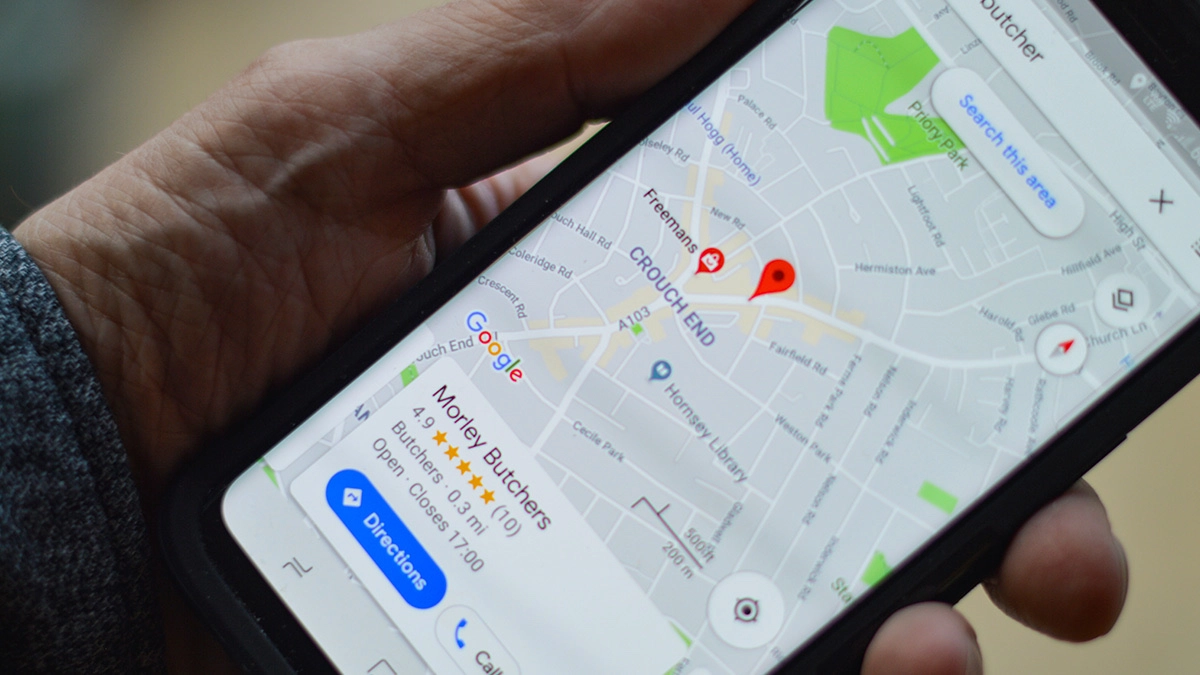In the vast landscape of the internet, standing out locally is essential for businesses looking to thrive in their communities. Local Search Engine Optimisation (SEO) is the key to making your business discoverable by potential customers in your area. In this guide, we’ll explore the fundamentals of SEO, delve into the nuances of Local SEO, provide you with a comprehensive Local SEO checklist, and highlight the incredible benefits of optimising your online presence for local searches.
What is SEO?
Search Engine Optimisation, commonly known as SEO, is the art and science of enhancing a website’s visibility on search engines. It involves optimising various elements on your website to improve its chances of ranking higher on search engine results pages (SERPs). The goal is to drive organic, unpaid traffic to your site, making it more accessible to users searching for relevant information or products.
SEO encompasses on-page factors (such as content, keywords, and meta tags) and off-page factors (such as backlinks and social signals). By aligning your website with search engine algorithms, you increase the likelihood of your content appearing prominently in search results.
How is Local SEO Different?
Local SEO takes the principles of traditional SEO and tailors them to target a local audience.
Search engines strive to provide the most relevant and localised results when users search for businesses, products, or services in a specific geographic area. Local SEO ensures that your business appears in these local searches, putting you on the digital map for potential customers in your vicinity.
Key distinctions in Local SEO include:
- The emphasis on local keywords.
- The importance of local business directories.
- The critical role of online reviews and ratings.
Local SEO is about establishing a solid online presence within your community, making it easier for nearby customers to find and choose your business.
The Benefits of Local SEO
- Increased Visibility: Local SEO helps your business appear in local search results, making it more visible to potential customers in your area.
- Targeted Traffic: By optimising for local keywords, you attract users actively searching for products or services in your specific location.
- Trust and Credibility: Positive online reviews and an optimised Google My Business profile build trust and credibility with your local audience.
- Improved Conversion Rates: When users find accurate and relevant information about your business, they are more likely to convert into customers.
- Competitive Advantage: Local SEO allows smaller businesses to compete effectively with larger enterprises by targeting a local customer base.
Local SEO Checklist
1. Setup Google My Business:
You may or may not have noticed that the Google Maps results tend to be near the top when you do a Google search. This is why having an optimised Google My Business profile is so important. The best part is that setting up your business on Google is free and only takes a few minutes.
Tasks:
- Claim and verify your Google My Business listing.
- Make sure your name, address, and phone number are accurate and consistent.
- Add high-quality images showcasing your business.
- Encourage and respond to customer reviews.
2. Local Keyword Research:
Identify and prioritise local keywords relevant to your business, and then start to incorporate these keywords naturally into your website’s content, meta tags, and headings.
Keyword research is the backbone of any SEO strategy, and it is no different when it comes to local SEO.
Stay attuned to changes in customer behaviour, industry trends, and search engine algorithms to optimise your local SEO strategy. Regularly updating and expanding your keyword list ensures you capture new opportunities and stay competitive in your local market.
3. On-Page SEO:
Using the local keywords you have decided on, optimise your website content, title tags and meta descriptions with local keywords.
If it is relevant to your business, consider designing landing pages specific to each location. This can improve the user experience and help boost your online presence.
Including NAP (Name, Address, Phone) information on every page can be beneficial.
We optimise on-page SEO using a WordPress plugin called Yoast SEO.
4. Get on local directories:
This can be time-consuming but easy enough for anyone to do. You may think that you have never searched for anything in a directory, and that may be true, but just because you haven’t doesn’t mean other people haven’t.
Getting your business onto as many local directories as possible helps build good website backlinks.
Some important things to remember are:
- Ensure consistent NAP information across online directories (Yelp, Yellow Pages, etc.).
- Verify and update information on industry-specific directories.
These are some directories to consider:
- Google My Business
- Yelp
- Facebook Business
- Yellowpages
- Apple Maps
- Bing Places
- Yahoo Local
- Tripadvisor
- Foursquare
- Citysearch
With so many directories, it can be time-consuming and confusing trying to manage them all manually. Thankfully, some helpful tools will allow you to track, manage and update your business information all from one place. Take a look at these:
- BrightLocal
- Moz Local
- SEMRush
5. Optimise your site for Mobile:
Google prioritises mobile-friendly websites in search results, whether the search was performed on a mobile, computer or tablet.
So, ensuring that your website is designed for the best possible mobile experience is more important than ever.
These are just a few ways to make sure your website is optimised for mobile:
1. Responsive Design:
- Implement a responsive design that adapts to different screen sizes and devices.
- Ensure that text, images, and other elements scale appropriately for optimal viewing on mobile devices.
2. Mobile-Friendly Navigation:
- Simplify navigation for mobile users with clear and concise menus.
- Use a mobile-friendly navigation structure like a hamburger menu to save space.
3. Page Load Speed:
- Optimise images and multimedia elements for faster loading times.
- Minimise the use of large images or graphics that could slow down page loading on mobile connections.
4. Touch-Friendly Elements:
- Ensure that buttons and clickable elements are large enough to be easily tapped.
- Provide enough spacing between interactive elements to prevent accidental clicks.
5. Readable Fonts:
- Use legible fonts with an appropriate size for mobile screens.
- Maintain a good contrast between text and background for readability.
6. Optimised Forms:
- Simplify and optimise forms for mobile users, minimising the number of fields.
- Implement features like auto-fill and input masks for a smoother form-filling experience.
7. Mobile-Optimised Images and Multimedia:
- Compress images without compromising quality for faster loading.
- Use mobile-friendly formats for multimedia content (e.g., HTML5 for videos).
read more
Google mobile friendly test
6. Local Link Building
Link building can be considered one of the most important aspects of improving your website’s SEO, but at the same time, it can also be one of the hardest.
Think about it this way. Each time another website links to your website, google considers it a vote of confidence that the content that your website has to offer is of high quality.
Some of the ways to build local links are:
1. Local Business Directories
- Ensure your business is listed on popular local directories.
2. Local Chamber of Commerce
- Join your local chamber of commerce.
- Membership often comes with a business directory listing and opportunities for collaboration and backlinking.
3. Local News and Media Outlets
- Reach out to local news websites, newspapers, and magazines.
- Offer newsworthy stories, events, or achievements related to your business.
- News outlets often link to relevant companies in their articles.
4. Local Sponsorships and Events
- Sponsor local events, charities, or community organisations.
- Event organisers often link to sponsors on their websites.
- Participate in local events and request links from event websites.
5. Collaborate with Local Businesses
- Build relationships with other local businesses.
- Offer to cross-promote each other by providing backlinks.
- Consider partnerships for joint events or promotions.
6. Local Blogs and Influencers
- Identify local bloggers or influencers in your industry.
- Offer to provide valuable content or collaborate on projects.
- Many bloggers appreciate quality content and may link back to your site.
7. Community Involvement
- Get involved in local community initiatives.
- Sponsor or organise events that benefit the community.
- Community-focused activities often attract local backlinks.
8. Local Educational Institutions
- Partner with local schools, colleges, or universities.
- Offer educational resources, internships, or workshops.
- Educational institutions may link to businesses that support their programs.
9. Local Reviews and Testimonials
- Encourage satisfied customers to leave positive reviews.
- Some review platforms allow businesses to include a website link.
- These reviews can act as valuable user-generated content with backlink potential.
10. Local Forums and Community Websites
- Participate in local online forums and community websites.
- Contribute helpful information and solutions to community discussions.
- Forums often allow you to include a signature with a link back to your website.
11. Local Associations and Organisations
- Join local business associations or organisations.
- Attend meetings and networking events to build connections.
- Associations often list their members on their websites.
12. Create Local Content
- Produce content that is specific to your local area.
- Write about local events, news, or topics relevant to your community.
- Local websites may link to your valuable local content.
Remember, the key to successful backlink acquisition is to offer value to the local community. Focus on building genuine relationships and providing content or support that is genuinely beneficial. Additionally, always ensure your backlink profile remains diverse and natural to maintain a healthy and authoritative online presence.
7. Online Reviews and Ratings
Encourage satisfied customers to leave positive reviews. Respond promptly and professionally to both positive and negative reviews.
Google My Business is helpful for getting reviews and can help with your local rankings.
Besides this, reviews assure potential new customers when they see that others have had a positive experience.
Tools to Help Your Local SEO
Several tools are available to assist businesses in optimising Local SEO efforts, some of which we have covered above. These tools can help with various aspects of local search optimisation, from keyword research to tracking performance. Here’s a list of some valuable tools for Local SEO:
Google My Business:
- Purpose: Manage your business listing on Google.
- Key Features:
- Update business information.
- Monitor and respond to customer reviews.
- Gain insights into how users interact with your listing.
SEMrush:
- Purpose: All-in-one SEO toolkit.
- Key Features:
- Keyword research for local terms.
- Competitor analysis.
- Site audit for SEO issues.
Moz Local:
- Purpose: Ensure consistent business information across online directories.
- Key Features:
- Check and update business listings.
- Monitor online reviews.
- Track local search rankings.
BrightLocal:
- Purpose: Comprehensive local SEO platform.
- Key Features:
- Local citation building and management.
- Reputation management.
- Local search ranking tracking.
Whitespark:
- Purpose: Local SEO software and services.
- Key Features:
- Local rank tracking.
- Citation building.
- Local search audit.
Ahrefs:
- Purpose: SEO tool for backlink analysis.
- Key Features:
- Identify and analyse backlinks.
- Keyword research for local terms.
- Competitor analysis.
Google Analytics:
- Purpose: Track website traffic and user behaviour.
- Key Features:
- Monitor organic search traffic.
- Identify popular landing pages.
- Analyse user demographics.
Mobile-Friendly Test by Google:
- Purpose: Check if your website is optimised for mobile devices.
- Key Features:
- Evaluate mobile responsiveness.
- Receive recommendations for improvement.
These tools can collectively provide a comprehensive approach to Local SEO, from managing online listings to tracking performance and optimising on-site content. Depending on your specific needs and goals, you may choose a combination of these tools to effectively enhance your local online presence. Stay updated on the latest features and technologies these tools offer to stay ahead in the ever-evolving landscape of Local SEO.


